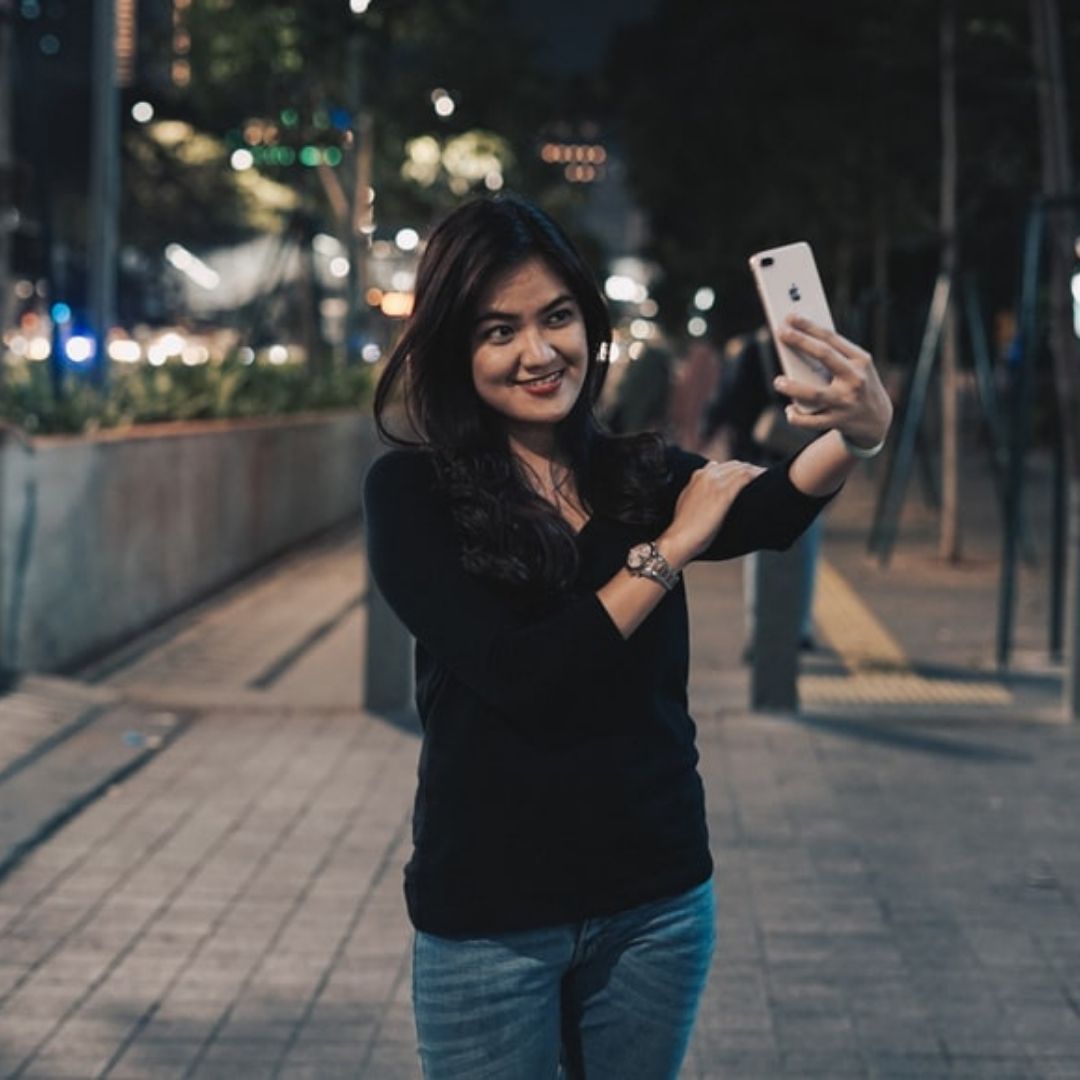
Image Credits: Unsplash
How Social Media Overdose Leads To Depression, Stress & Anxiety Among Adolescents
Others/World, 28 Oct 2021 11:55 AM GMT
Editor : Palak Agrawal |
Palak a journalism graduate believes in simplifying the complicated and writing about the extraordinary lives of ordinary people. She calls herself a " hodophile" or in layman words- a person who loves to travel.
Creatives : Tashafi Nazir
For most people, journalism sounds hectic and chaotic. For her, it's a passion she has been chasing for years. With an extensive media background, Tashafi believes in putting efforts on presenting a simple incident in the most interesting way.
Teenagers may be uniquely equipped with the tools and skills to stay socially connected while remaining physically distant. However, a growing body of research also indicates that social media can negatively affect teens depending on how and when they use it.
The COVID-19 pandemic has affected the health, safety, and everyday lives of all people. Teenagers may be uniquely sensitive to this abrupt disruption in terms of both biological and psychological changes that occur during this developmental period. Social media has rapidly transformed how adolescents socialise and interact with one another. The pandemic has only magnified this societal dilemma as teens spend more time on social media than ever.
Although people of all age groups are experiencing social and emotional challenges of physical distancing, teenagers are particularly affected by the abrupt and prolonged disruption in their social lives. Adolescents may be uniquely equipped with the tools and skills to stay socially connected while remaining physically distant. However, a growing body of research also indicates that social media can negatively affect teens depending on how and when they use it, according to a 2020 Pittsburgh study.
"Social media" can be many things, several essential features differentiate most social media from traditional in-person interactions. As compared to face-to-face conversations, social media tends to be more public, allowing for simultaneous interactions with many persons at once. Social media is also more "quantifiable", the things teenagers do online are often characterised by numbers of likes, followers, and views. Seeing friends' likes, views, and comments on their content may help teens feel connected, but may also increase vulnerability to "status-seeking" and peer influence during a period of heightened sensitivity to peer evaluation.
Social media involves fewer "interpersonal cues" than in-person interactions, including tone of voice, facial expressions, and gestures. Without these cues, teens may feel encouraged by the screen distance, both to engage in healthy self-disclosure with friends and, alternatively, to create rude or hateful content.
Screen Time And Mental Health
Yet prior research examining the effects of social media on teenage mental health has often revolved across these tools, sites, and activities, typically estimating associations between overall "screen time" and well-being. While many studies have found important, albeit small, correlations between time on social media and a higher amount of depression, body dissatisfaction, disordered eating, and health-risk behaviours, others have found no such associations for screen time and mental health.
According to data website Statista, the number of social media users has grown over the years in India. In 2021, the number has risen to 448 million, mainly because of the increased use of smartphones across the country, while the number of internet users is nearly 624 million, covering about 45% of the total Indian population.
Teenagers and adolescents in the age group of 13-19 years, constitute 31% of total social media users in India, according to the data website, Statista.
Research on social media consumption before the COVID-19 crisis has often highlighted the potential negative implications for teens' mental health.
As many teens turn to social media amid the pandemic, these general risks may be aggravated. Further, as the content featured across social media sites is increasingly centered on the crisis itself, it raises new considerations for teenagers' emotional well-being.
Stress And Anxiety
The risks of social media negatively impacting adolescent mood and anxiety have been well-documented in prior literature. As young people view carefully crafted images and videos of their friends, they may engage in unfavourable social comparisons regarding lifestyles and material possessions. They may feel increased pressure to present a particular image of themselves to live up to those portrayed by others and to obtain online indicators of social statuses, such as likes and views.
Further, with more time online, adolescents may be more prone to encounter social stressors, such as peer conflict, "drama," and even cyber-victimisation, which negatively impact mental health.
With the younger ones at home and spending major time on their devices, the ability to escape these stressors may be further diminished. Youth may also be more likely to come across inappropriate content, depicting, for example, peers engaging in risky behaviours (e.g., substance use, dangerous 'stunts') or even self-injurious behaviours the phenomenon of Fear of Missing Out (FoMO), which often occurs through social media, is associated with anxiety, loneliness, and depression. At any time, youth may worry that peers are engaged in rewarding social interactions without them online, prompting increased screen time and pressure to respond to posts and messages, the study says.
COVID Anxiety
Much of the content teenagers see on social media during this period may be related to the COVID-19 pandemic. Content may have references to the virus itself, online content of others' physical distancing practices, updates on news, and descriptions of their peers' experiences with the pandemic. Much of this content may be scary, distressing, or overwhelming. As teens spend more time scrolling through social media sites to relieve boredom, they may be coming across a barrage of this content, exacerbating anxieties, creating a sense of frustration and hopelessness, and negatively impacting mood. Within the context of the COVID-19 pandemic, new fears related to social media use may also arise.
Physical distancing practices may also prevent teens from gaining in-person social support to cope with anxiety and stress. Further, the need to rely on video tools for socialisation may develop new anxieties due to a lack of established social rules and comfort with these platforms.
Teens prone to anxiety may be likely to be affected by COVID-19 related news and information, contributing to panic attacks or general worries about what might happen. However, the adolescents may also benefit more from the positive aspects of social media use, including social connection and online support groups for coping with COVID-19 or with access to online mental health resources.
Further, many adolescents may themselves test positive for COVID-19, experience symptoms of the virus, or have loved ones who fall sick or succumb to the disease. Social media may provide managing resources and support for adolescents navigating the complex emotions of loss, grief and trauma. Teens who are immuno-compromised or have pre-existing medical conditions are more vulnerable to the adverse effects of the virus. These teens may be even more socially inactive and anxious about COVID-19 and may find references to the virus on social media particularly overwhelming, scary, or frustrating.
Also Read: United States Issues Its First Passport With 'X' Gender Marker
 All section
All section














